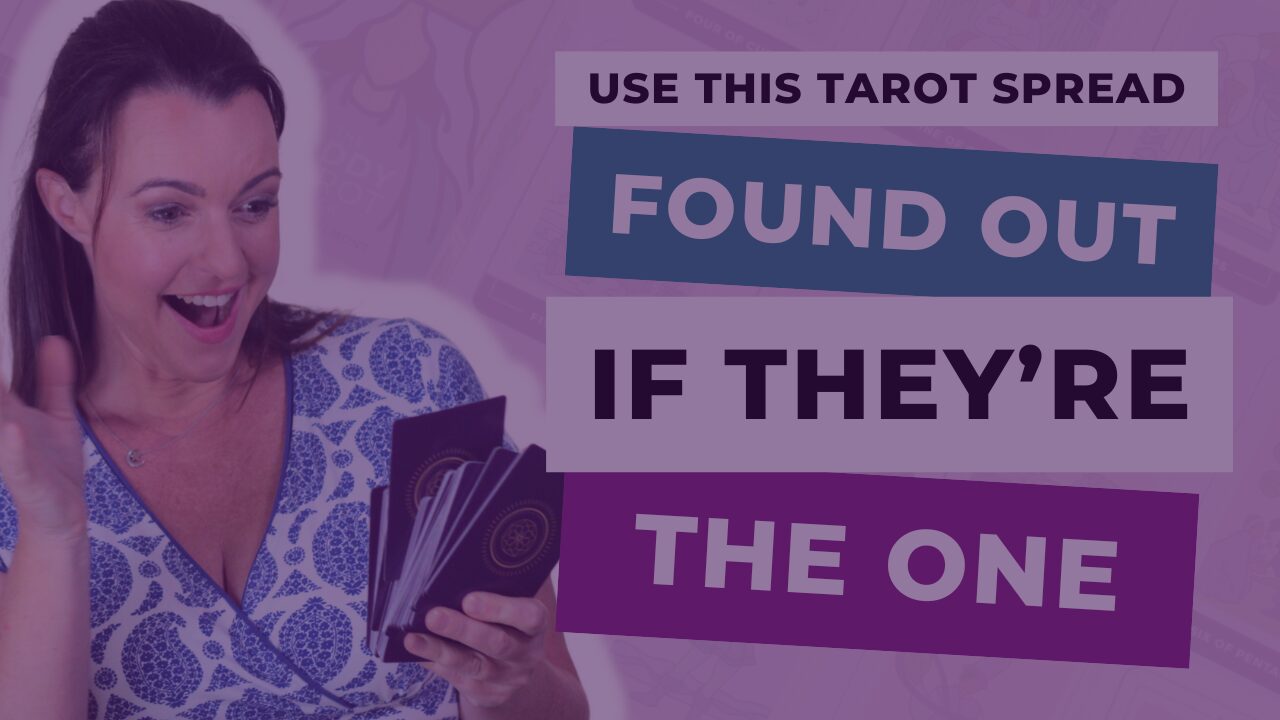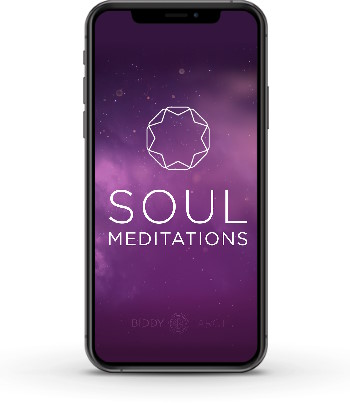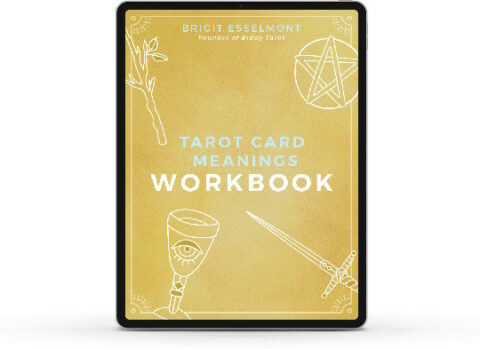 I am thrilled to have James Wells, a Toronto-based Tarot consultant, author and teacher, with me today in a special interview about empowering Tarot spreads.
I am thrilled to have James Wells, a Toronto-based Tarot consultant, author and teacher, with me today in a special interview about empowering Tarot spreads.
James' Tarot reading style is highly engaging and interactive, and he comes from a place of guiding and empowering his clients to make independent decisions about the directions of their lives (I know this from personal experience with a Tarot reading with James). In our interview, he shares his perspectives and ideas on creating Tarot spreads and layouts that support such empowering readings, and shows how two common Tarot questions can be reframed for a more empowering outlook.
Let's get into it!
Brigit: James, I am very drawn to your unique approach to Tarot readings, both as a reader of your blog and as someone who has personally experienced a Tarot reading with you. I am so intrigued by the way you create such powerful and poetic Tarot spreads, that seem to empower and heal the questioner and that go so far beyond the more conventional Tarot spreads that are available.
So, I would love to talk to you more about how you go about creating these powerful and unique Tarot spreads.
What are your ‘guiding principles' for creating personalised Tarot layouts for your clients?
James: In general, what guides the process of creating a tarot layout is a spirit of openness and healthy curiosity, a sense of wondering what might want to be explored.
Of course, a layout must address the person's situation. That might sound obvious, but it's really what it's all about.
I also want something in the layout to guide the client to the core of the issue s/he brings so we can uncover a pattern or story that underlies it. Some part of the spread, for me, should interfere with whatever pattern we discover or carry the potential to derail the person from whatever path is not working for her/him.
A final guiding principle is the time that the client and I will spend together. Because of my interactive style, six or seven cards maximum will fit nicely into an hour. Nine or ten cards are good for a 90-minute session.
To summarise, in a spirit of curiosity, I create a layout that addresses the readee's topic, opens a door to a deeper awareness, invites change, and fits neatly into our agreed-upon time frame.
What are some of your favourite questions that you include in your layouts?
James: Some of my favourite questions to include in layouts are variations on “pro and con”: benefits and costs, advantages and disadvantages, green lights and red lights, resources and blocks, and so forth. It's helpful to get feedback about what we perceive as the best things about an experience or event and the worst thing about an experience or event. The sense of perspective this offers can be very empowering.
How do you transform a question such as, “Will my ex return to me?” into something that is very empowering and healing, whilst also honouring the client's need for an ‘answer'?
James: First of all, I prefer to think that instead of needing an answer, the client actually needs a response or some form of feedback. Sometimes the tarot offers questions to ponder or concepts to contemplate. At other times, there's a very clear answer, but it's not what someone wants to hear or it's not necessarily something of which the person is capable of carrying out just yet.
Getting back to your main point about transforming questions, it boils down to making sure that questions in a layout can't be answered by “yes” or “no”. Anything that begins with “will” or “should” is immediately discarded because they imply that every detail of life is pre-planned by some external agency or that the same external agency's morals and values take precedence over our own.
The example you provide — “Will my ex return to me?” — contains so many sub-questions that can become a very elegant and useful spread. Some that come to me include:
- What qualities in my ex do I miss having in my life?
- What is a healthy alternative way for me to experience those qualities?
- What does the ex's absence represent to me?
- What is the ex's absence really?
- If the ex came back, how would I most likely feel about it after three months? six months? a year?
- How can I move through the stages of grief around the ex leaving me?
- What compels me to ask about my ex?
- To what insight does that compulsion want to steer me?
- What do I gain by the ex's absence?
- What do I long to share with another person?
- How else might I share that quality?
I'm sure that you can find even more sub-questions.
My point is that giving someone a “yes” or “no” to “Will my ex return to me?” isn't helpful. Depending on the person's situation and mindset, the cards' indication of “yes” or “no” could either give the client false hope, a sense of panic and terror, bring relief, or set them on a path of despair. Creating and using a layout with the questions that are pulsing in the heart of the initial inquiry can give the client a greater sense that there are options other than the ex returning or the ex staying away. The emphasis comes back to the readee and what s/he can learn from the situation in order to evolve. Even though the ex left (yes, that is a fact), the client's life is larger than that one event. Designing and employing a spread that reflects this stance can help the person remember that his/her well-being does not hinge on one other person's decision to do something or not.
Do you go as far as rephrasing the client's specific question?
James: In the way I work, there's no need to rephrase the client's question because all of my tarot sessions are by appointment and I don't ask them, “What is your question?” or “What would you like to ask?” In other words, my practice isn't geared to walk-in or call-in clients who decide to get a reading on a whim.
Instead, I send the person a series of intake questions to respond to prior to the session, much as a counselor or coach would do. Their responses to the questions about their goals, challenges, reasons for seeking a tarot consultation, and their primary objective(s) for our time with the tarot are the basis for the questions I craft and turn into a layout. This way of working with people means that I don't get questions with which I'm not comfortable and it means that they get to the heart of things.
If people don't respond to the intake questions, I assume that they're not interested in having a tarot consultation with me. And that's OK. However, most people go through the process and are delighted to have that much personal attention given to them and their issues. I spend a minute or two at the beginning of the session itself going over the layout to make sure it addresses what they need to know. If necessary, we make minor adjustments, but most times people say that the spread addresses their situation exactly and they're very happy with what I've come up with.
How do you respond to third party readings?
James: There's nothing wrong with getting feedback from Life through the cards around, “What nourishing things am I receiving from Name?” or “What am I not receiving from Name?” or “What role does Name currently play in my life?”, but it's unethical territory for me to get into, “What is Name thinking about me right now?”
Wish You Had A Tarot Card Meaning Cheat Sheet?
Get Your FREE Tarot Card
Meanings Reference Guide
And Avoid Getting Stuck When Trying To Remember The Card Meanings

My response to that would be to pick up the telephone, hand it to the client, and say, “Here's a phone. Call them and ask them yourself.”
Again, it all goes back to the fact that tarot encounters are by appointment only and to the process of the client responding to the intake questions and me creating a spread based on those responses. All of that preliminary work weeds out anything unnecessary or disempowering. I'm not saying that every tarot consultant should do this. It's something that makes my work with tarot clients satisfying and profoundly interesting. And it gives the people who consult me what they require for their best good at the time. Win-win!
Tarot Question Clinic
Brigit: James, I'd love to give you a couple of very common questions for a “Tarot Question Clinic”. How would you go about reframing these questions and creating a Tarot layout?
Question 1: Do you see marriage in my future with this person?
James: I would begin by asking the person if they and other person have talked about their life together and if marriage was part of that discussion.
If not, I might encourage them to have that talk before even doing anything with the tarot.
If so, I might proceed with a layout that addresses the nature of their relationship, pros and cons of marriage for them, and a bit of advice about how to contribute to a thriving relationship. So layout positions 1, 2, and 3 might be the original reason for being together, the current reason for being together, and what their reason for being together will most likely be six months or a year from now. Positions 4, 5, 6, 7, 8, and 9 would address pros and cons of marriage for the client, pros and cons of marriage for the other person, and pros and cons of marriage for the relationship itself. Spread position 10 would cover a final piece of advice for the client, a suggestion as to how they might keep the relationship healthy and happy over the next year or so. I might lay out the cards in this pattern:
10
4 5 6 7 8 9
1 2 3
Question 2: Tell me about my future
I would tell the person that I don't believe that there's one future set in stone, but rather potentials within and around us that we can tap into. Then I'd ask the person what three parts of life are most interesting to them. Then, I would turn those three things into a six-card layout about the best potential in each of those categories and first steps to take to make those potentials a reality.
For example, a person says that intimate relationship, money, and spirituality are their top three aspects of life. Layout position 1 asks, “What does your best potential intimate relationship look like?” Position 2 asks, “What is your first step to making that relationship a reality?” Positions 3 and 4 would address their best money-earning potential and the first step toward that. Positions 5 and 6 would address their best potential spiritual experience and the first step to making that happen. I would probably lay out the cards like this:
2 4 6
1 3 5
Feature in James' New Book on Tarot Spreads
James is currently working on a book of original tarot layouts. The intentions for the book are that it is a practical resource, it honours the power of context, it fosters self-awareness and constructive change, and it plants seeds of cultural change.
How can YOU be a part of this helpful book? You can have a personal tarot consultation with James using one of the spreads that will appear in the book. If you choose to do so, you'll get a special rate and your session might even show up in the book (with a disguised name, if you choose).
This offer to try out an original layout at a special rate is on NOW and is ONLY good until May 15, 2013. If you'd like to take part, send an email to James at [email protected] to book your appointment. Can be by Skype, by phone, or in person.
Learn More About James Wells
 James Wells is a Toronto-based motivational listener, consultant, teacher, and facilitator who is dedicated to merging soul and strategy. From childhood, he has been curious about what makes people and the Universe tick. Through tools and processes such as circle methodology, tarot, reiki, and journal writing, James and his clients and students are inspired to remember their creativity, resourcefulness, and wholeness. Whether at home or abroad, whether in personal sessions or in workshop settings, he provides an experience of council mind. In his “me time”, James enjoys reading, writing, music, walking, close friends, and good food.
James Wells is a Toronto-based motivational listener, consultant, teacher, and facilitator who is dedicated to merging soul and strategy. From childhood, he has been curious about what makes people and the Universe tick. Through tools and processes such as circle methodology, tarot, reiki, and journal writing, James and his clients and students are inspired to remember their creativity, resourcefulness, and wholeness. Whether at home or abroad, whether in personal sessions or in workshop settings, he provides an experience of council mind. In his “me time”, James enjoys reading, writing, music, walking, close friends, and good food.
You'll find him at his website, Circle Ways, or on Facebook.




 Harness the wisdom of the Major Arcana with 22 guided meditations. Here’s what you’ll get:
Harness the wisdom of the Major Arcana with 22 guided meditations. Here’s what you’ll get: Start doing deep, accurate readings TODAY with this step-by-step accelerated program for beginners.
Start doing deep, accurate readings TODAY with this step-by-step accelerated program for beginners. Here’s what you’ll find inside for every card in the deck:
Here’s what you’ll find inside for every card in the deck: Create a deeply intuitive and personal connection to the Tarot cards with your very own Tarot Card Meanings Workbook. Here’s what you’ll find inside the workbook:
Create a deeply intuitive and personal connection to the Tarot cards with your very own Tarot Card Meanings Workbook. Here’s what you’ll find inside the workbook: